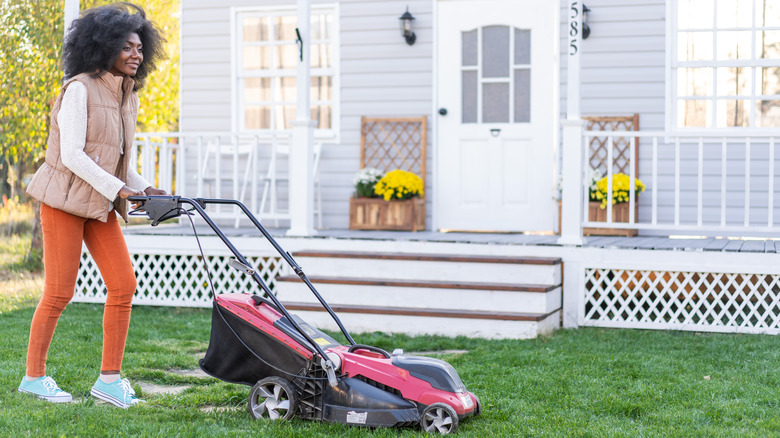Bees are one of the most essential critters in our world’s ecosystem. They’re responsible for pollination, which is what allows trees, fruits, vegetables, flowers, and more to grow successfully. But after years of a declining population due to climate change, bees are endangered. One of the best ways we can cultivate bee species is by providing them with comfortable habitats and environments in our own gardens. But even if you’ve read every guide and filled your yard with bee-friendly herbs and plants, you may still not be attracting as many bees as you’d hoped. This may come down to one unexpected thing: how often you’re mowing your lawn.
Frequent mowing removes long grass blades, but wildflower blossoms as well, which bees seek out in order to pollinate. So when you deprive your lawns of these blooms, you also deprive bees of much-needed habitat and nutrition. According to research from the USDA, if you can reduce your lawn mowing to once every two weeks, your lawn will be in the sweet spot for attracting an abundance of bees.
Why is two weeks ideal?

Many of us grew up hearing that mowing the lawn once a week was ideal. While this will generally keep the lawn looking neat at all times, it’s detrimental to bee populations. And, frankly, we’ll take any excuse to pull the lawn mower out a little less often, especially for a good cause. Wondering if you can get away with mowing even less frequently? The USDA found that the lawns that were only cut every three weeks promoted more bee species diversity than those cut every two weeks, but had fewer numbers of bees in the yard. The longer grass blades may have actually made it more difficult for the bees to reach the flowers. For that reason, so long as your mission is attracting as many bees as possible to the yard, you want to keep to a bi-weekly schedule.
If you’re particularly worried about making sure your lawn looks good at all times, consider using a weed wacker to clean up the perimeter of the grass or trim away particularly unruly patches of grass. That way, you can deal with little areas to keep the yard looking nice without depleting the rest of your lawn’s bee-happy resources.
Regular neighborhoods are essential for bee populations
With a problem as big and serious as declining bee populations, it can seem like the little efforts we make to help the cause are insignificant. But in truth, regular home gardens and lawns are the ideal places to perform pollinator-friendly practices, especially when it comes to bees. Consider the fact that the United States alone has roughly 63,000 miles of lawn (via NPR). These areas in our front and back yards and community areas, if properly mowed and maintained, can make a huge impact in saving the bees. And this bee conservation effort actually takes a chore off of your to-do list every other week — what’s not to love about that?
In addition to mowing your lawn less frequently, consider adding a few native bee-friendly wildflowers to your lawn. It may not make for the traditional, super-green ideal we’ve grown up seeing images of, but the bees will thank you for it.